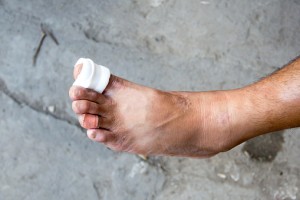Basal Metabolic Rate (BMR) Explained
OK, I am writing this partly in response to Benki who just asked “what is BMR and how is it related with burning fat?“. There is an equation to calculate resting metabolic rate at the end of this article. This article does not go into any great detail of the biology of metabolism or discuss all the methods for estimating or accurately measuring basal metabolic rate. It does aim to highlight why BMR is just a guideline (we are all different) and how to apply the concept of BMR to losing weight.
My reply to Benki was simply,
This is how much energy your body requires each day for normal functioning (breathing, digestion, repairing cells etc.) while at rest. BMR can vary in adults from around 1100 kcal/day to 2500 kcal/day. The average BMR is 1500 kcal/day. People have different BMR’s, you cannot calculate it without medical aid.
There are many BMR calculators / formulas online but none are accurate and you could easily end up eating too much or too little if you use a calculator.
While this answer should help to explain BMR at the most basic level, it is important that we go into a little more detail and attempt to dispel some of the myths and misconceptions about metabolism and its role in maintaining and losing weight.
A Basal Metabolic Rate Calculator
The following simple equations provide a basic BMR Calculation:
Pounds & Inches BMR Formula:
- Women: BMR = 655 + ( 4.35 x weight in pounds ) + ( 4.7 x height in inches ) – ( 4.7 x age in years)
- Men: BMR = 66 + ( 6.23 x weight in pounds ) + ( 12.7 x height in inches ) – ( 6.8 x age in years )
Metric BMR Formula
- Women: BMR = 655 + ( 9.6 x weight in kilos ) + ( 1.8 x height in cm ) – ( 4.7 x age in years )
- Men: BMR = 66 + ( 13.7 x weight in kilos ) + ( 5 x height in cm ) – ( 6.8 x age in years )
Examples:
A 30 year old man who is 220 pounds and 5 foot 10:
- BMR = 66 + (6.23 x 220) + (12.7 x 70) – (6.8 x 30)
- BMR = 66 + 1370.6 + 889 – 204
- BMR = 2122 Calories per day
A 45 year old woman who is 75 kg and 165 cm tall:
- BMR = 655 + (9.6 x 75) + (1.8 x 165) – (4.7 x 45)
- BMR = 655 + 720 + 297 – 211.5
- BMR = 1461 Calories per day
Compare these to the figures for sedentary people on our Daily Calorie Needs tables, which give a figure of 2500 Calories for a 30 year old male and 1800 Calories for a 45 year old woman. Remember, these figures are averages, height or muscle mass is not taken into account.
Basics of Metabolism
Metabolism is the biological process whereby stored energy is used to fuel cellular functions, i.e. the rate or speed at which your body will burn calories, whether you are active or at rest.
Around 70% of an average person’s total energy expenditure is due to basal metabolic functions – for athletes this will be lower. Of the remaining 30%, 20% is used for movement (any physical movement, exercise etc,) and the remaining 10% is used by thermogenesis (maintaining a constant body temperature) and digestion of food.
All forms of metabolism require the intake of oxygen which is used in a chemical reaction to generate energy at cell level. Carbon dioxide is the waste from metabolism. This is why when we exercise we have to breath harder – to get more oxygen in and to release more carbon dioxide.
The following table provides a breakdown of energy expenditure. The liver is the most active organ in the body and accounts for 27% of all basal metabolism.
Why A Fast Metabolic Rate Is Important
The higher your metabolic rate is, the more calories that your body can handle without gaining any fat, or the easier and faster you can lose weight, especially when exercising. Also, if your metabolic rate is higher than normal, you will put on less weight when eating a healthy and well balanced diet. Basically, with a high metabolic rate, you do not need to be so careful with what, or how much, you eat.
Exercise can help to increase metabolic rate, and exercising first thing in the morning can be very beneficial as this kick starts the body into action at the start of the day, so that more calories are consumed throughout the day. Someone that has a hard time losing weight most likely has a very slow metabolic rate since their body burns few calories over time
You probably know some people that one can lose a lot of weight very easily while still eating a lot more food and calories than you. This can be very frustrating to see, but it is quite natural. We are all built differently. Having a faster metabolic rate mean that you can process calories easier and more efficiently than the someone with a slower metabolism.
Bodybuilders and Metabolism
A good example of this in action are professional bodybuilders, such as Dave Henry and Dexter Jackson. These bodybuilders have very high metabolic rates, which allows them to eat not only very high amounts of food, but also lots of “forbidden” foods, like pizza, fried chicken wings, fast food, all without ever getting fat.
Bodybuilders generally eat differently to normal people, in that they consume smaller meals at more frequent intervals throughout the day. This ensures that the body always have a good supply of protein for muscle repair and growth. The type of eat, akin to grazing almost, is a good way to keep the metabolic rate high while also consuming a lot of calories.
Using Cardio To Increase Metabolism
Cardio exercise can raise your metabolic rate. But how much can it help to increase your metabolic rate? Cardio exercise is not as effective as intensive weight training, but it does help. Cardio will raise your metabolic rate for a couple of hours afterwards, at most, but intensive weight training, on the other hand, has been reported to cause increases in metabolic rate that last for up to a couple of days.
When you consider all the people who regularly attend gyms and workout intensively on treadmills, rowing machines, cross trainers and in aerobics classes etc. they never seem to actually get any more ripped, toned, or defined. However, consider bodybuilders and professional athletes. They do not do as much cardio, yet have very high metabolic rates and show up at competitions much more ripped and toned than the bodybuilders that do hours of cardio per day.
So, if you wish to increase your metabolic rate through exercise, then you should seriously consider doing some intensive weight training. GO heavy, aim to workout with free weight if possible. Do compound exercises, and aim to do 2 or 3 sets of 8-12 reps for each exercise. And remember to rest. For more information on weight training routines and exercises check out our weight training guide.
Metabolism Slows Down When On A Diet
There are several common misconceptions about metabolism and VLCD’s (very low calorie diets which is when less than 800 kcal is eaten daily). It is often said that low calorie dieting results in your body going into “starvation mode” and your BMR falls, meaning that you do not lose weight. While your body may well want to store more fat during starvation mode, it cannot store what is not eaten. The idea of weight loss stopping is nonsense and probably made up by people that are selling a combination of weight training and protein supplements to aid fat loss. However, it is still a good idea to avoid slowing metabolism with too little food – we need food to fuel our bodies to work harder.
If you have ever had the misfortune of seeing somebody become ill and lose their appetite, you will know that fat loss happens, and happens quickly. Also, images from prisoner of war camps and concentration camps from the Second World War show quite clearly what happens when people are giving minimal food for many months, or years. Weight loss happens to all, there are no exceptions, bizarre genetics does not result in a few people never losing weight.
Here is an example which is typical of the advice often found online:
“the next time you are considering a super low calorie diet to lose weight, remember your body’s ability to burn calories will slow down significantly, too” Renee Smalling, M.S., Metabolism and Low-Calorie Diets on Fit Pursuits.
Yes, your BMR will lower, but not significantly. Dr. Gary Foster, Director of the Center for Obesity Research and Education, told Shape Magazine that those who follow a 800 kcal a day diet may see their metabolism fall by around 10%. While this sounds significant, the diet is restricting food intake by about 60%, so the 10% drop in BMR is not going to stop fat loss.
For Example….
Weight loss will continue so long as your daily calorie intake is below your calorie needs (BMR). If your BMR is 2200 Calories and you eat 800 Calories a day, then the possible reduction to metabolism will mean that you now only need around 2000 Calories a day – you are still eating 1200 Calories fewer than your body needs, and therefore will still lose weight.
Add in some exercise and your body will burn fat very quickly – although you may not be able to sustain this for long.
Fitter People Do Not Have Higher BMR
While increasing muscle mass significantly (i.e. bodybuilders) can have a more significant impact on basal metabolic rate, in general fitter people are not burning more energy when at rest. Their advantage is that they are burning a lot more energy while exercising.
Broeder concluded that “the results of this study strongly suggest that RMR is independent of both a person’s current aerobic level and training status“. See the research links by Broeder (1992) and Smith (1997) for more on this.
The Real Problem
The real problem with VLCD’s is that they are not sustainable. It is hard enough to stick to a healthy eating plan and do regular exercise, with very low calorie diets the additional hunger that is felt often results in dieting failure – people cave in to the temptation to eat and then eat far too much.
This is really the biggest problem of any weight loss or diet plan. People want too much too soon, set unrealistic goals and then when the going gets too tough, they give up and say “it’s impossible!”.
Or, as Dr. Foster puts it, “a common theme across studies is poor long-term adherence and weight regain.” (Foster, 2011).
However, in health research where the patients had to lose weight before the main study, all those who followed a strict 800 kcal a day diet lost the predicted amount of weight. To put it simply, if you follow the plan you will succeed. Failure is not biologically possible.
VLCD Is Not Healthy
Of course, eating less than your BMR is not sensible or advisable. While you will lose weight, you will be losing both fat tissue and muscle tissue – you will become weaker and less fit. You are also putting your long-term health at risk as you may suffer malnutrition – it is hard to get all the nutrients your body needs in just 800 Calories a day.
It is still recommended that women do not eat any less than 1200 kcal a day. Going below this amount of food increases the risk of developing health problems.
Dr. Foster’s Advice
Dr. Foster make a sensible suggestion – aim to have a daily calorie deficit of 500 kcal, using a combination of diet and exercise (e.g. 250 fewer calories consumed, 250 calories burned with exercise). This should see a weekly weight loss of about 1 pound, which is considered sustainable and healthy.
MotleyHealth agrees with this approach. Aim to have a daily calorie deficit of 500 kcal a day and you will lose fat consistently. This also means that you continue to exercise so get fitter, stronger and maintain your muscle. Great for health as well as reducing fat.
Calculating Your BMR
There are many ways to estimate your BMR but it is not possible to accurately calculate it without medical assistance.
BMR is given in kcal/day. A good estimates can be calculated by using one of the following 2 equations, which are the Revised Harris-Benedict Equations. Due to differences in total muscle mass men and women each have a different formula:
BMR for Men
BMR = (13.397 x mass (kg) ) + (4.799 x height (cm) ) – (5.677 x age (years)) + 88.362
BMR for Women
BMR = (9.247 x mass (kg) ) + (3.098 x height (cm) ) – (4.330 x age (years)) + 447.593
Example
A 35 year old woman it 1.60 cm tall (5 foot 3) and weighs 75 kg (165 pounds). Her BMI is 29.2 so she is borderline obese.
The equation will read:
BMR = (9.247 x 75) + (3.098 x 160) – (4.33 X 35) + 447.593
BMR = 693.5 + 495.7 – 151.6 + 447.593
BMR = 1788
So, for this woman to lose 1 pound per week, she will need to follow a daily calorie deficit of 500 kcal, so will need to ensure that she does not eat any more than 1288 Calories a day if she is not exercising. If exercising daily for around 45 minutes then eating 1500 Calories a day should result in similar weight loss.
Note that on the table of Daily Calorie Needs for Females a 35 year-old sedentary woman needs 1800 Calories a day – so the figures do match up rather well, not bad for 2 estimated figures.
Understanding Basal Metabolic Rate can help you to get fit and lose weight. Weight loss really is all about calories in and calories out.
References and Further Reading
“Dietary approaches to the treatment of obesity.” by Makris A, Foster GD. Psychiatr Clin North Am. 2011 Dec;34(4):813-27. doi: 10.1016/j.psc.2011.08.004.
The truth about metabolism by Stacy Whitman, Shape Magazine. An interview with Dr. Gary Foster.
BMR Calculator – Diabetes.co.uk’s BRN caculator.
How Many Calories Do You Need Each Day To Lose Weight? – MotleyHealth.
“The effects of aerobic fitness on resting metabolic rate” by Broeder, CE; Burrhus, KA; Svanevik, LS; Wilmore, JH (1992). The American Journal of Clinical Nutrition 55 (4): 795–801. PMID 1550061.
“Relationship between maximum aerobic power and resting metabolic rate in young adult women” Smith, DA; Dollman, J; Withers, RT; Brinkman, M; Keeves, JP; Clark, DG (1997). Journal of Applied Physiology 82 (1): 156–63. PMID 9029211
-
Your Diet Legacy And Your Daughter
As moms, we often try to instill our beliefs, values, ethics, moral
-
Surprising Risk Factors for Osteoporosis
The risk of osteoporosis is not something that should be taken
-
Easily Get Rid of Your Lower Stomach Fat
First and foremost, you need to understa
-
What To Do If I Cant Lose Weight
Youve dieted, youve exercised, and you f
-
The Miracle of 100 Calories
What do you think of when you think about losing weight? Does your
-
Low Fat Versus Low Carb Diets
Diets, diets, diets... every where you go, anything you read you cant
- DON'T MISS
- How to Set Reasonable Weight Loss Targets
- Secrets to Weight Loss Success
- How Would You Like A Bikini Body Fast?
- Obesity Caused by Environment
- How To Lose Stomach Fat Faster Than You Ever Thought Possible
- Laser Fat Removal
- Boost Your Metabolism: 3 Quick and Easy Ways to Rev Your Body’s Fat Burning Machine
- Poor digestion? Lemon water can help!
- Rapid Weight Loss - Fat Burning Workouts Myths And Reality
- Dr. Dion Presents: 80/20 Rules To Lose Weight And Keep It Off For Good




